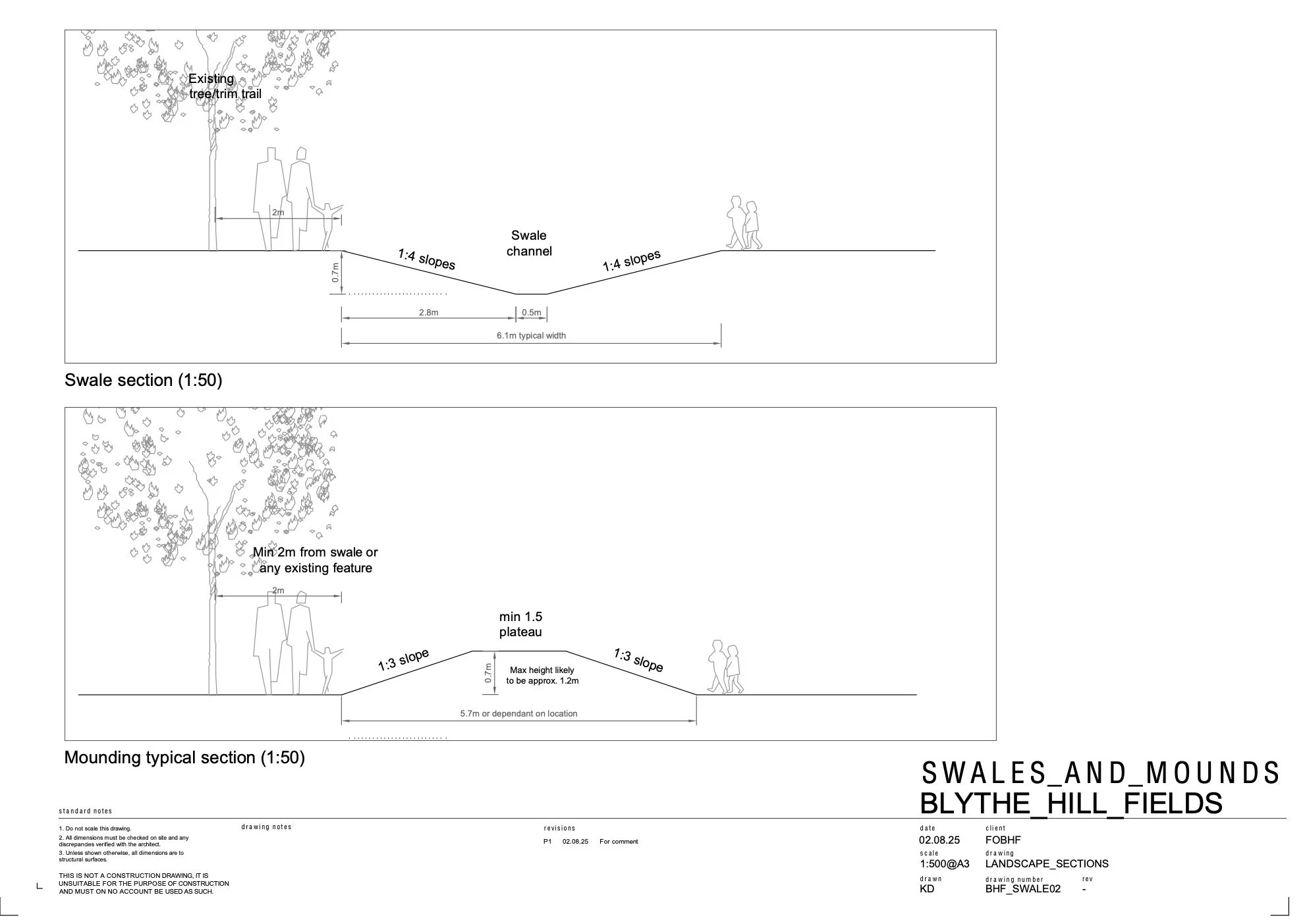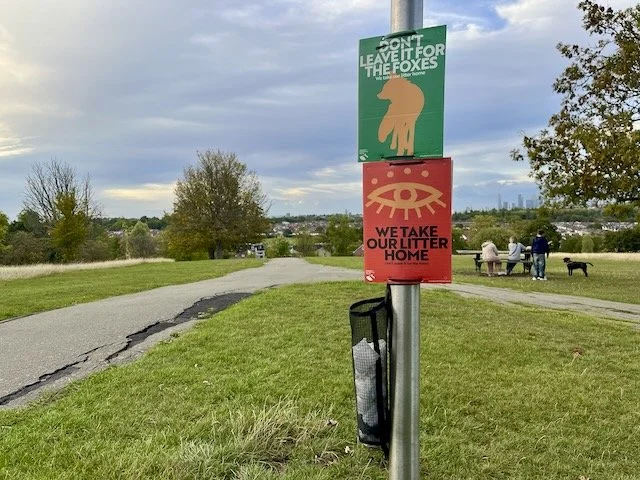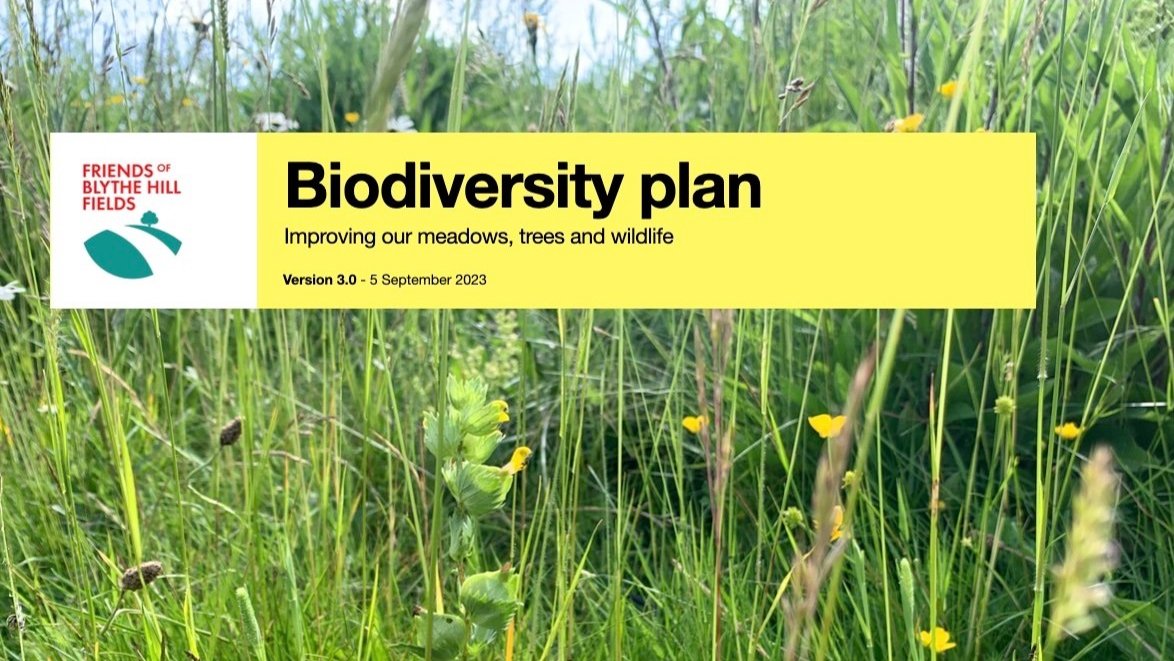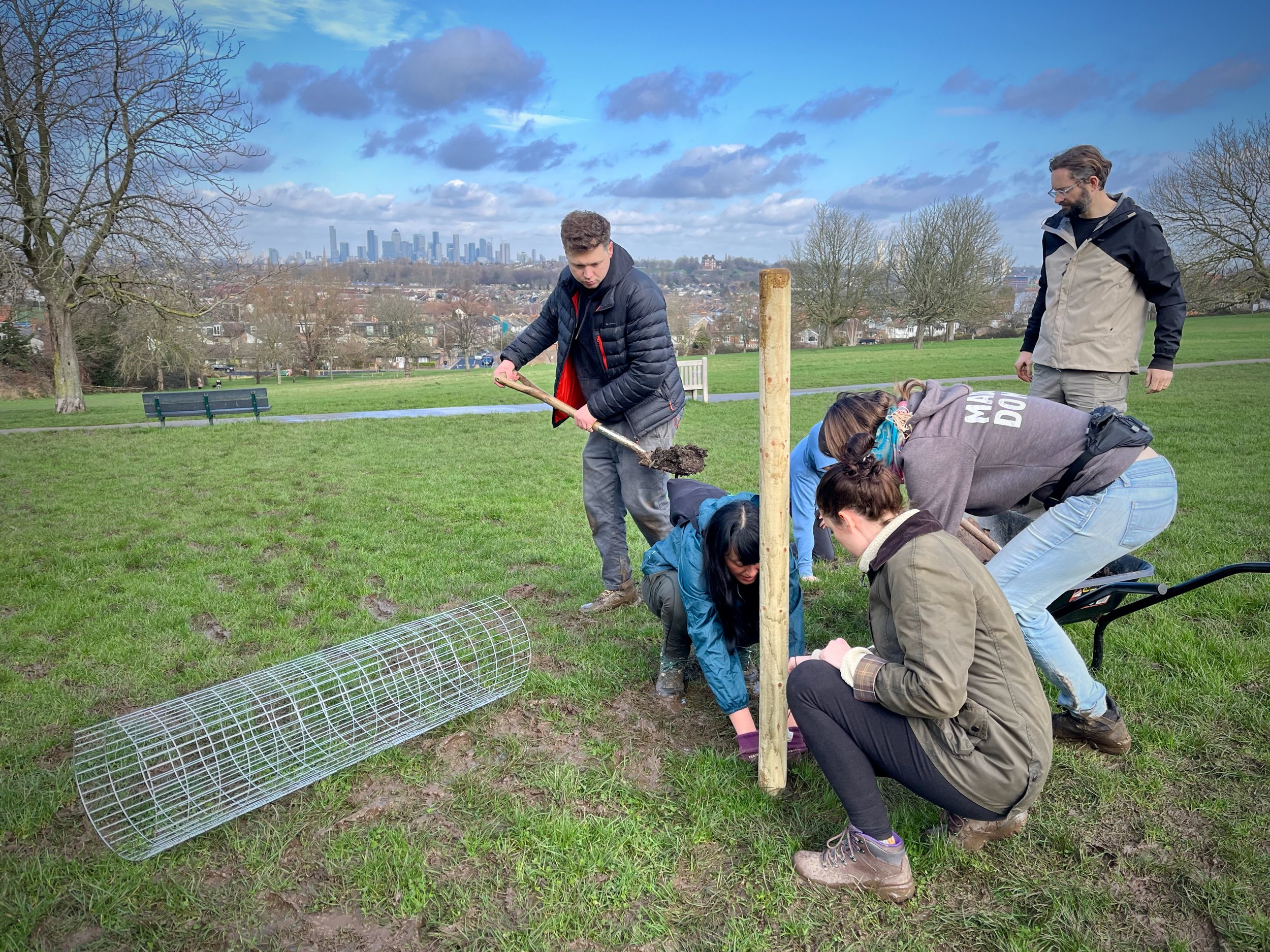
PROJECTS
What we’re working on
There’s always something going on and new volunteers can expect a warm welcome. If you’d like to take part, or have some ideas of your own, please get involved.
For details about projects in previous years, take a look at our impact.
Swales and mounds
Thanks to the design expertise of local landscape architect Kate Digny-O’Sullivan, we are delighted to be adding a new sequence of Bioswales and play mounds to support and complement the new trim trail and food forest.
Designed with safety in mind, the swales will have a gentle 1:4 gradient, while adding significant new benefits to the park’s new community zone including:
Making the trim trail more playable for more of the year, while protecting it from water damage
Adding a new overflow play space for children, with rocks, log bridges and stepping stones to encourage nature-based play
Protecting the food forest from waterlogging and providing a ready source of water in the Spring
Boosting the beauty of the site, with abundant meadow flowers and water
Adding new types of habitat, including ‘ephemeral’ ponds, which will dry out for much of the year, and new types of wildflowers, including marginal plants that live in swampy areas and on water’s edges
Creating a South-facing sandy ‘bee bank’ which will provide habitat for burrowing bees.
The project is likely to start in early 2026, followed by some ‘swale days’ with local primary schools who will help with planting water plants while learning about amphibians and water-based habitats.
The bioswales will be complemented by a small wildlife pond, also being developed in Spring 2026.
Early concept sketch of the swales.
Blythe Hill Fields Wildlife Garden
We’re delighted to have had the green light from Lewisham and Glendale for our ambitious plans to develop a new community wildlife garden.
Developed after consultation with the community and designed by the talented gardeners at HH Garden Landscapes, who have generously volunteered their time and skills for the project, we have developed a thoughtful, people-friendly and wildlife-boosting new layout for the space.
The garden expands the site at the oval near the playground with new areas of wildlife friendly planting, new habitats, including bug posts and gabion shelters. An adventure paths is accessible to wheelchairs, prams and scooters, plus there are new benches where tired mums and carers can rest.
The design incorporates the large Hornbeam tree nearby, which will have a feature bench under its generous shade. There are plans to transform the mysterious big green box into a community art project.
We’re planning to continue fundraising for the garden with the aspiration to continue developing and enhancing it for years to come.
If you have any questions or you’re interested in being involved please drop us an email.
Littering campaign
The Friends has been drawing on behavioural science to design an effective littering campaign for the Fields.
Littering behaviours are driven by social norms – if people see litter about, they are more likely to litter, so it’s vital to stay ahead of the problem before it takes hold.
The Friends has been encouraging local people to undertake regular litter picks and we’ve provided ‘help yourself’ litter pickers for people to use from a key location in the park.
At the same time, a poster campaign is helping to underscore our preferred behaviours with the message ‘We take our litter home’. An additional poster highlights a local problem of ‘wishful binning’ where people leave bags of rubbish next to overflowing bins that are then ripped apart by local wildlife – ‘Don’t leave it for the foxes’.
Lastly, we aim to create a sense of generosity and reciprocity by providing free carrier bags at key points around the site - ‘Please help yourself to a bag.’ This type of gesture has been shown to make people more likely to behave in a reciprocal way.
No single initiative can solve a problem as complex as littering, but we are hopeful that community engagement in caring for the park, coupled with ongoing supplies of fresh bags, will help to create a significant reduction.
Our new trim trail
After our successful application to the Greening Fund, the Friends has helped to install a new trim trail for older children aged 8-12, which links the Wildlife Garden to the Orchard, creating a whole new community-focused space.
We consulted with young people and parents about what they want to see in the site and our subcommittee has incorporated their ideas into a brief for Lewisham Council.
The Friends match-funded the Greening Fund budget, effectively doubling the cash available for investment in this vital play equipment.
In a straw poll soon after installation, the kids rated their new kit ‘ten out of nine’ – result!





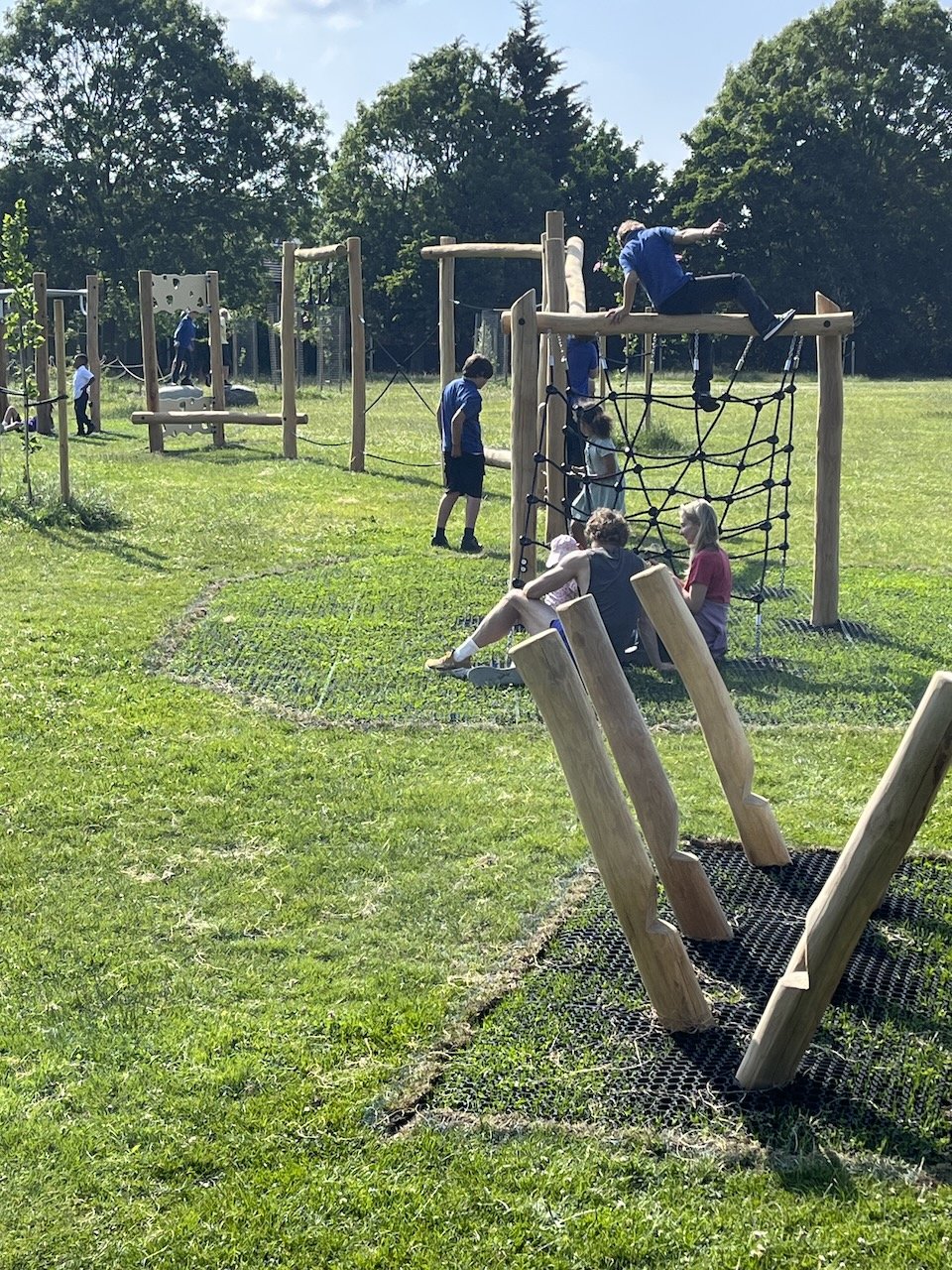
The Food Forest
The Friends have planted a new orchard – or ‘food forest’ – on Blythe Hill Fields, after winning funding from the King’s Coronation Heritage Fund.
Around 40 volunteers were joined by our local MP Ellie Reeves for a planting day at the end of January, planting 14 new trees, which serve as the backbone of the orchard and provide free, fresh fruits for everyone in the community for decades to come.
Well managed orchards serve as a bridge between people and nature, as well as being excellent sources of habitat. Food forests are orchards that are transformed into multi-layered ‘edible ecosystems’ that aim to model a more sustainable way to grow food.
Supported by the The Orchard Project, our volunteer working group has been trained in orchard care skills, as well as getting involved in a community-led design process.
Take a look at the plan for the full tree list and do join us for ongoing tree care and enhancements as we gradually evolve the orchard – by adding herbs, perennial and shrubs – into a fully-fledged ‘edible food forest’ or forest garden.
If you’d like to get involved please join our Biodiversity WhatsApp group or check the Wildlife Garden page for occasional updates.
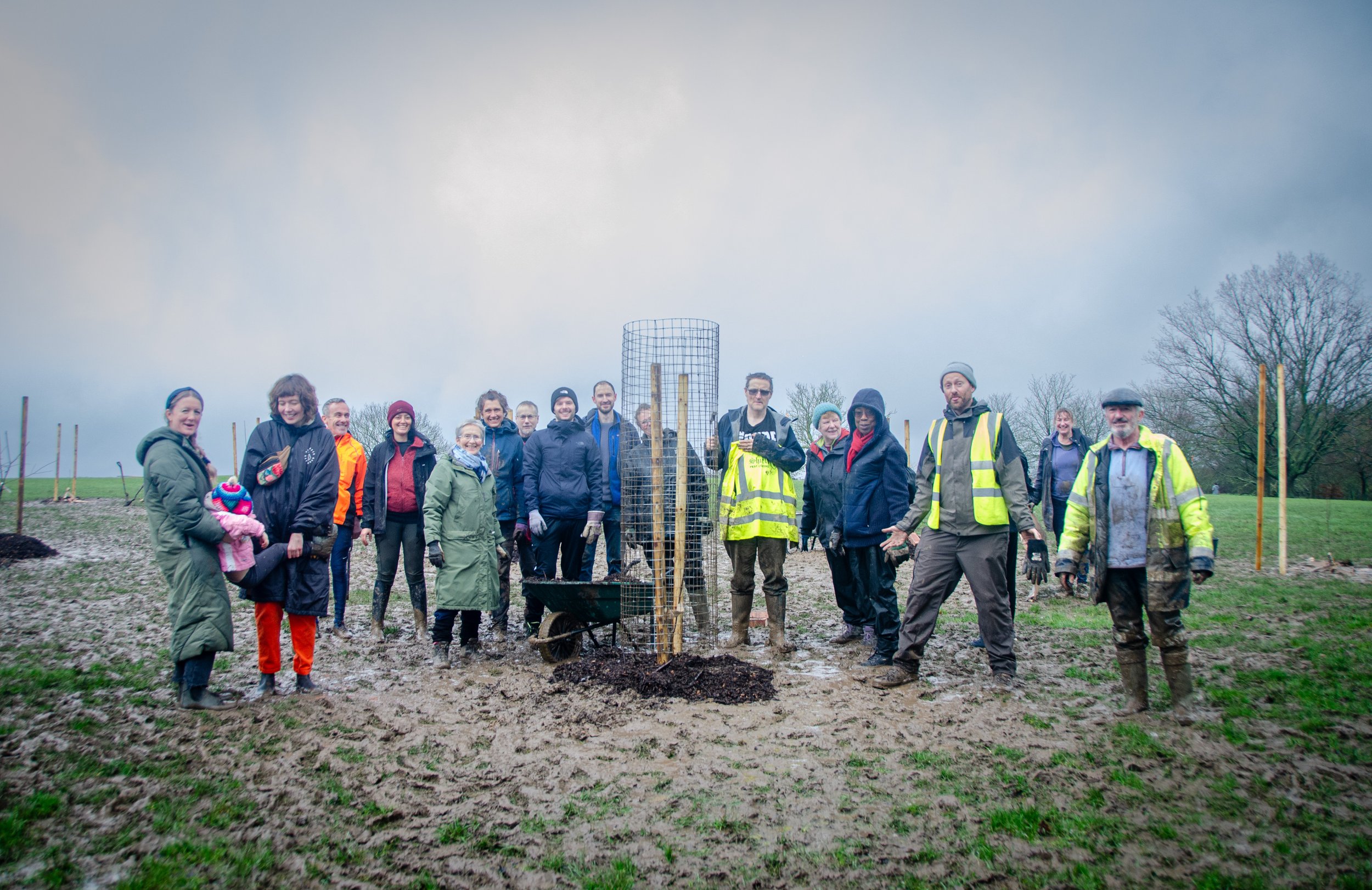
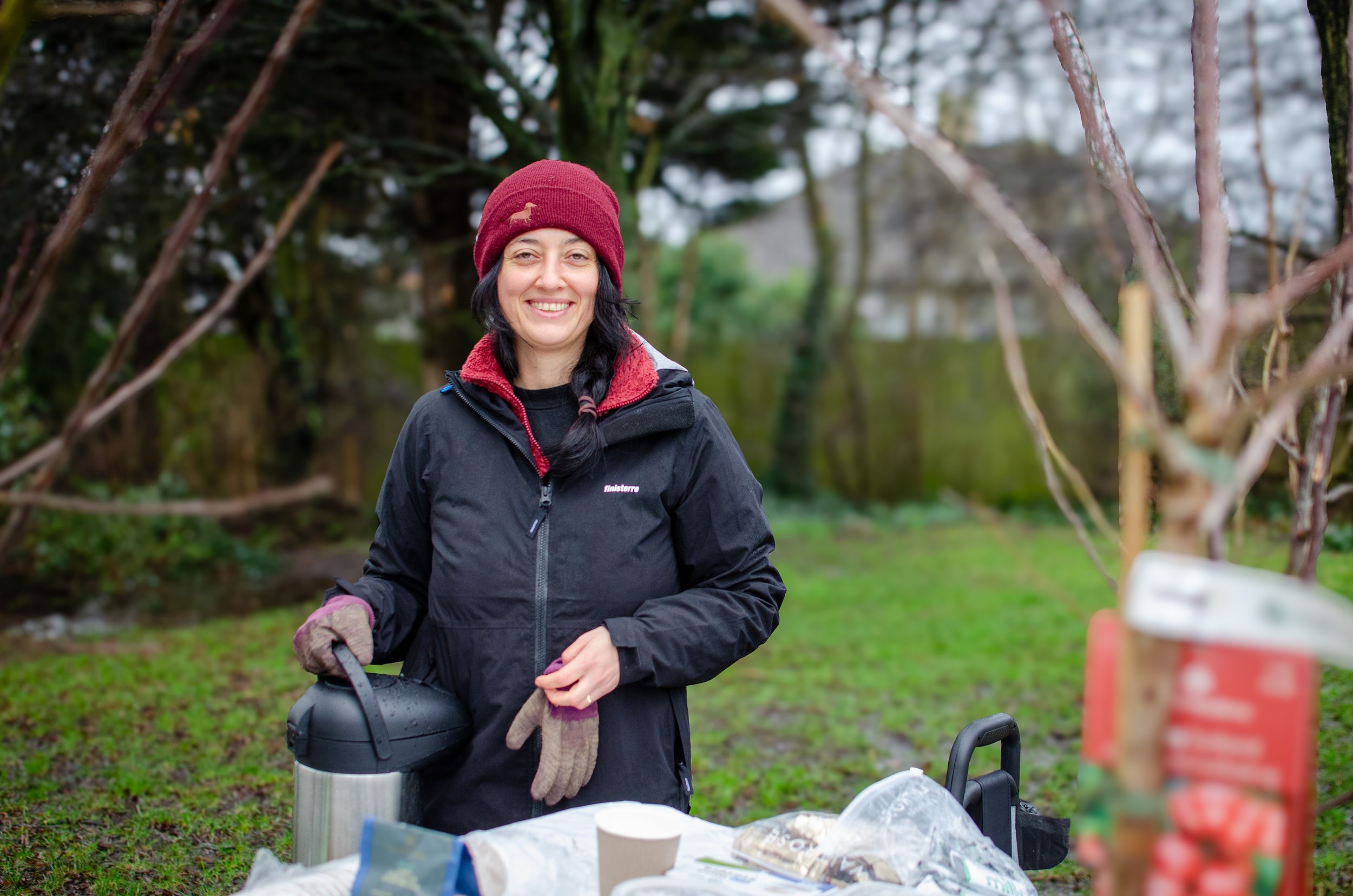
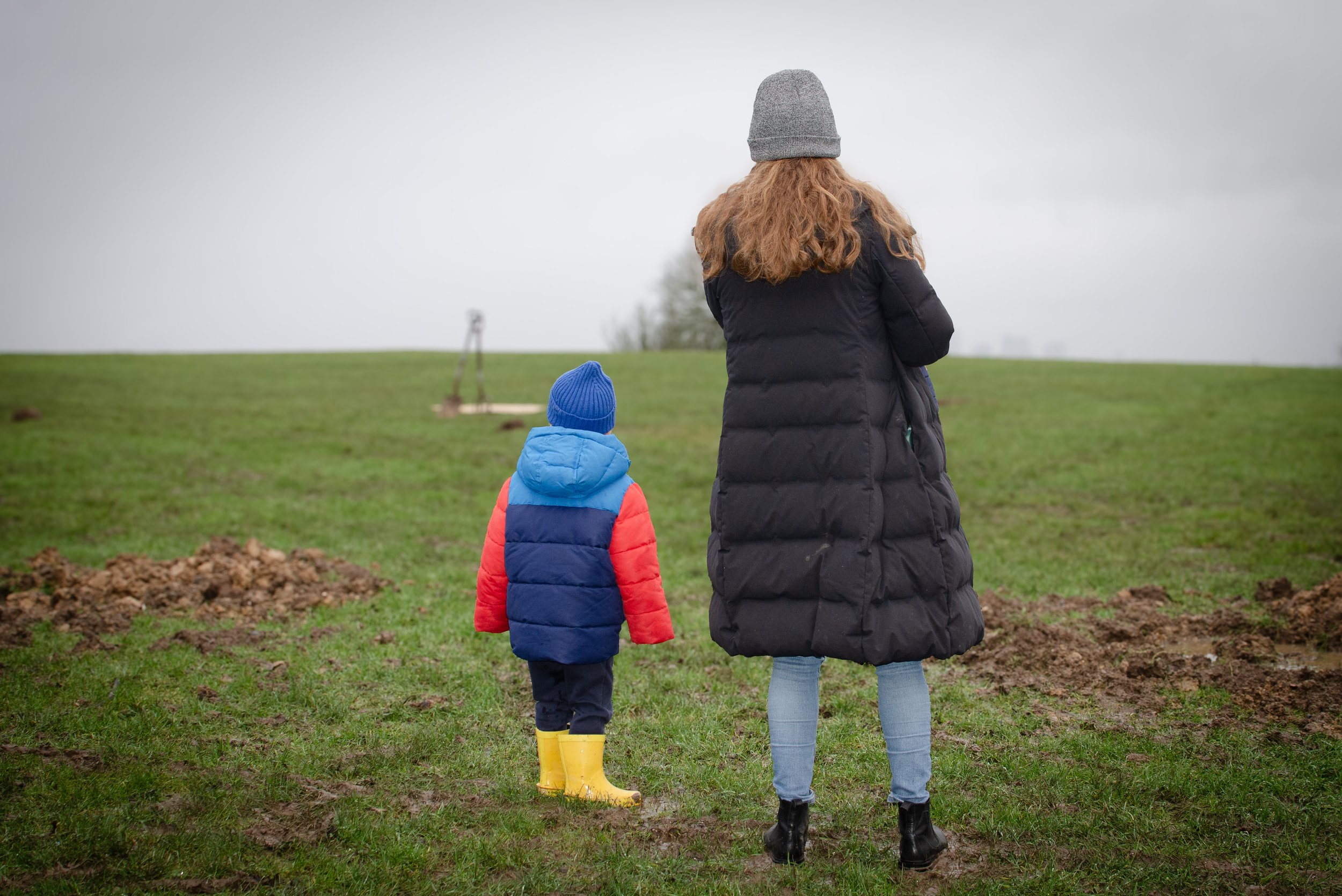
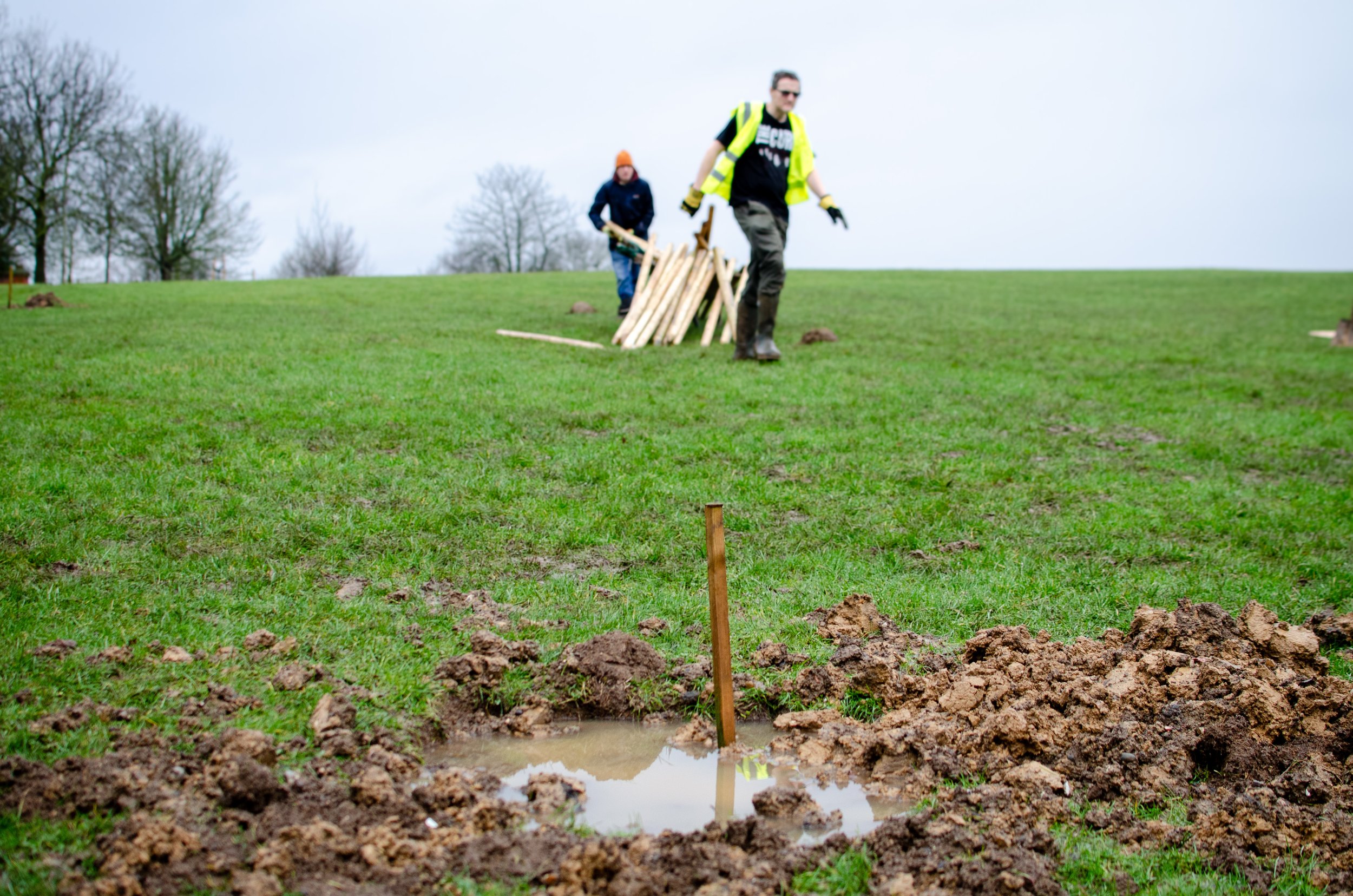
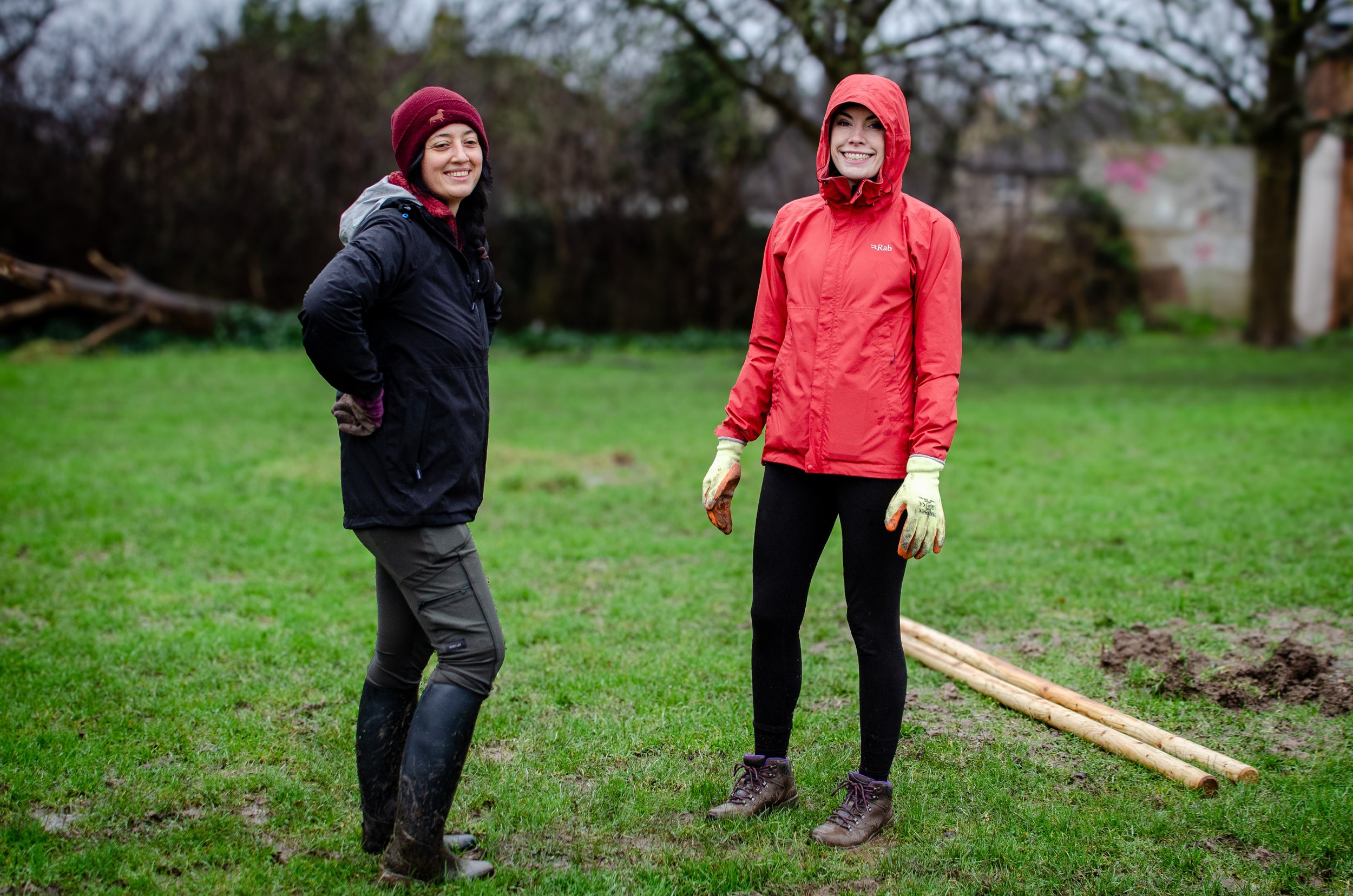
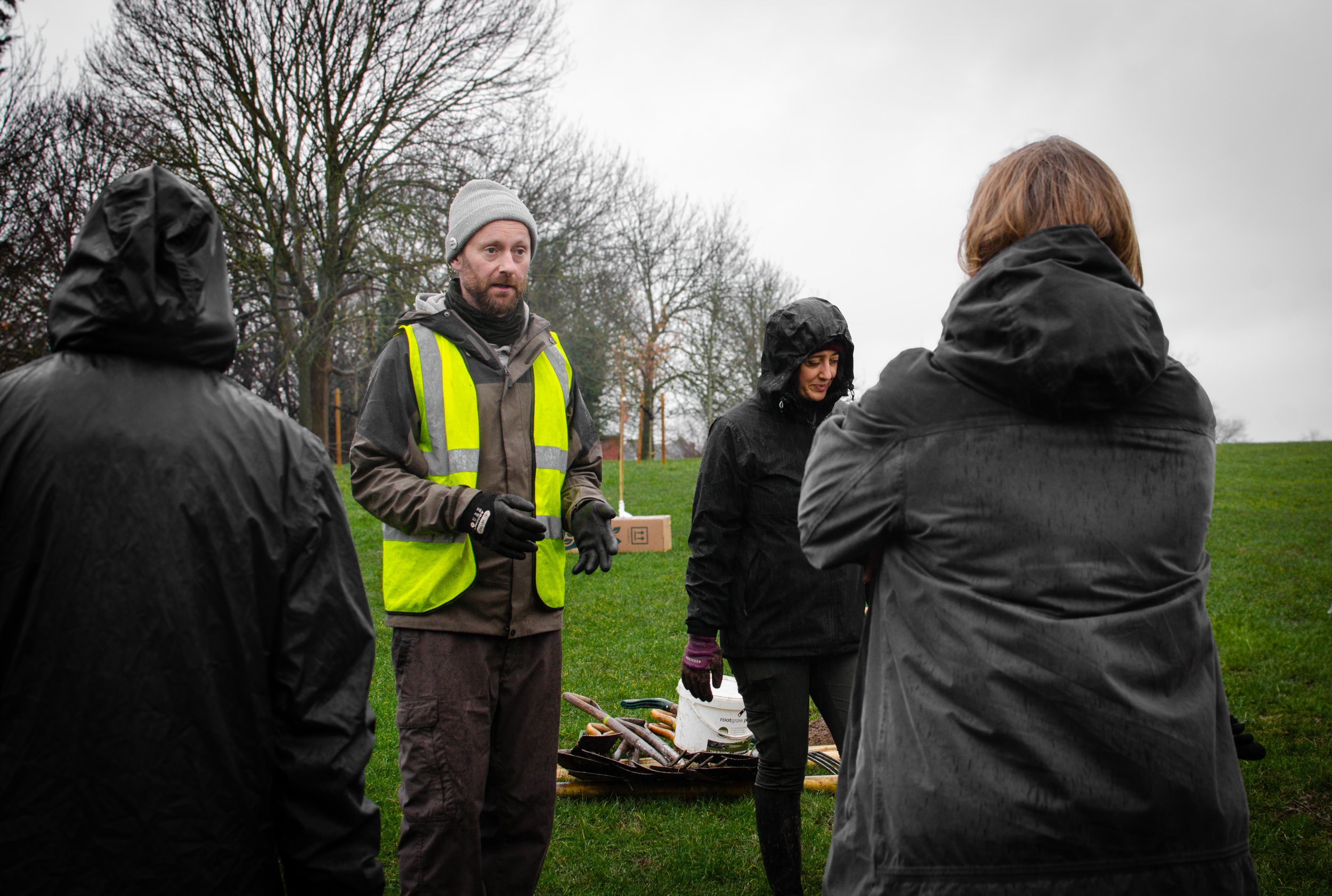


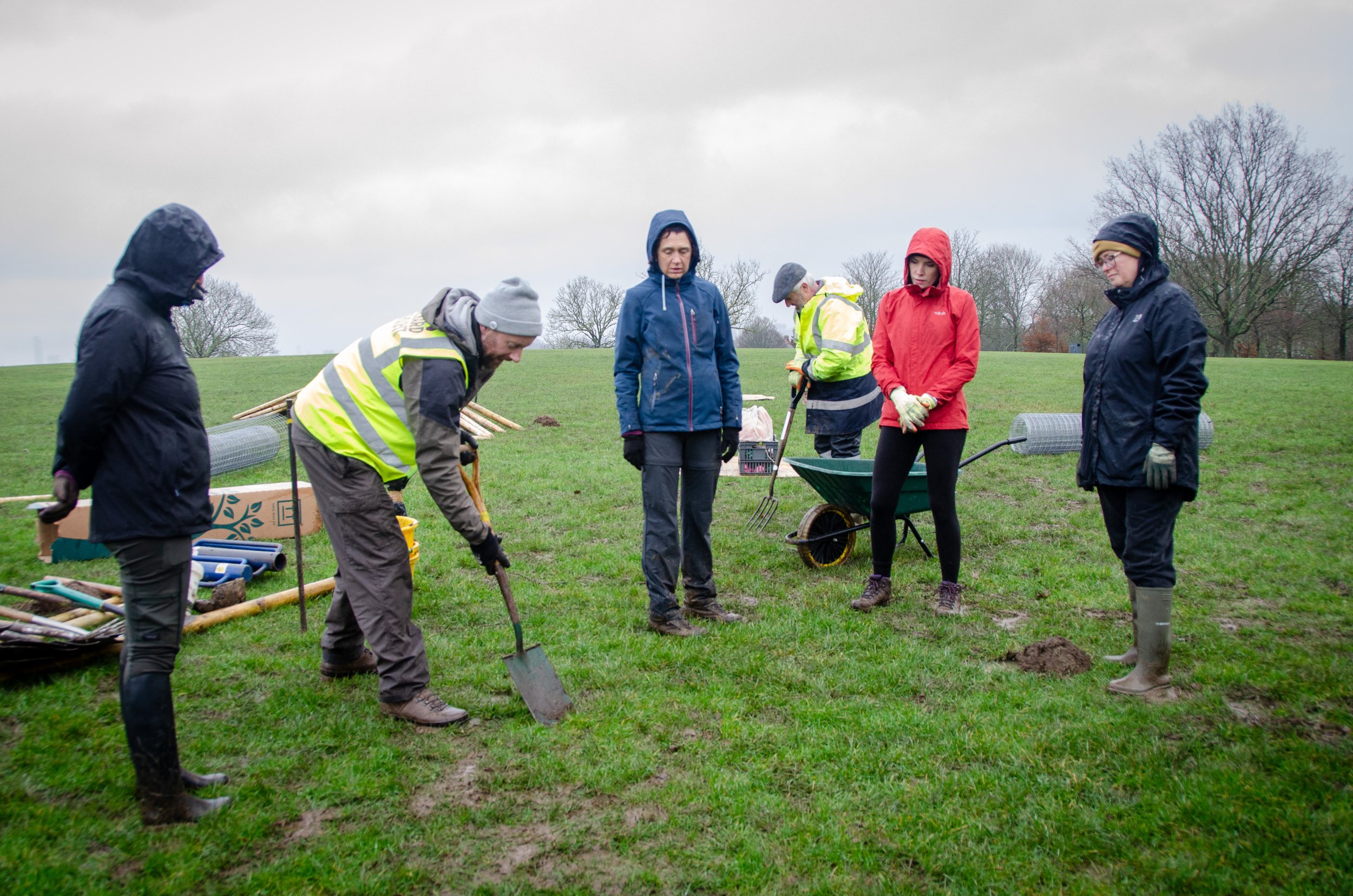
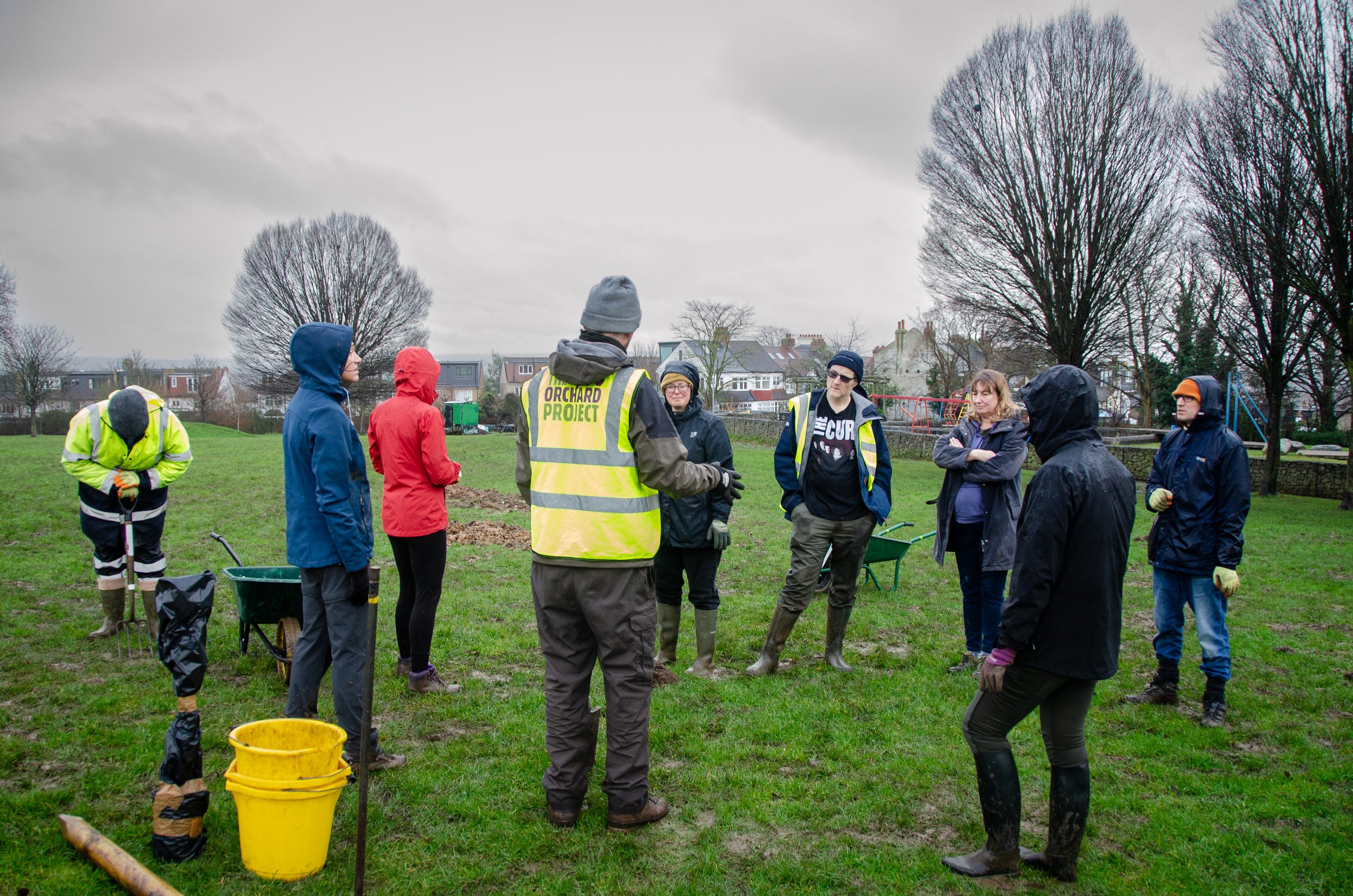
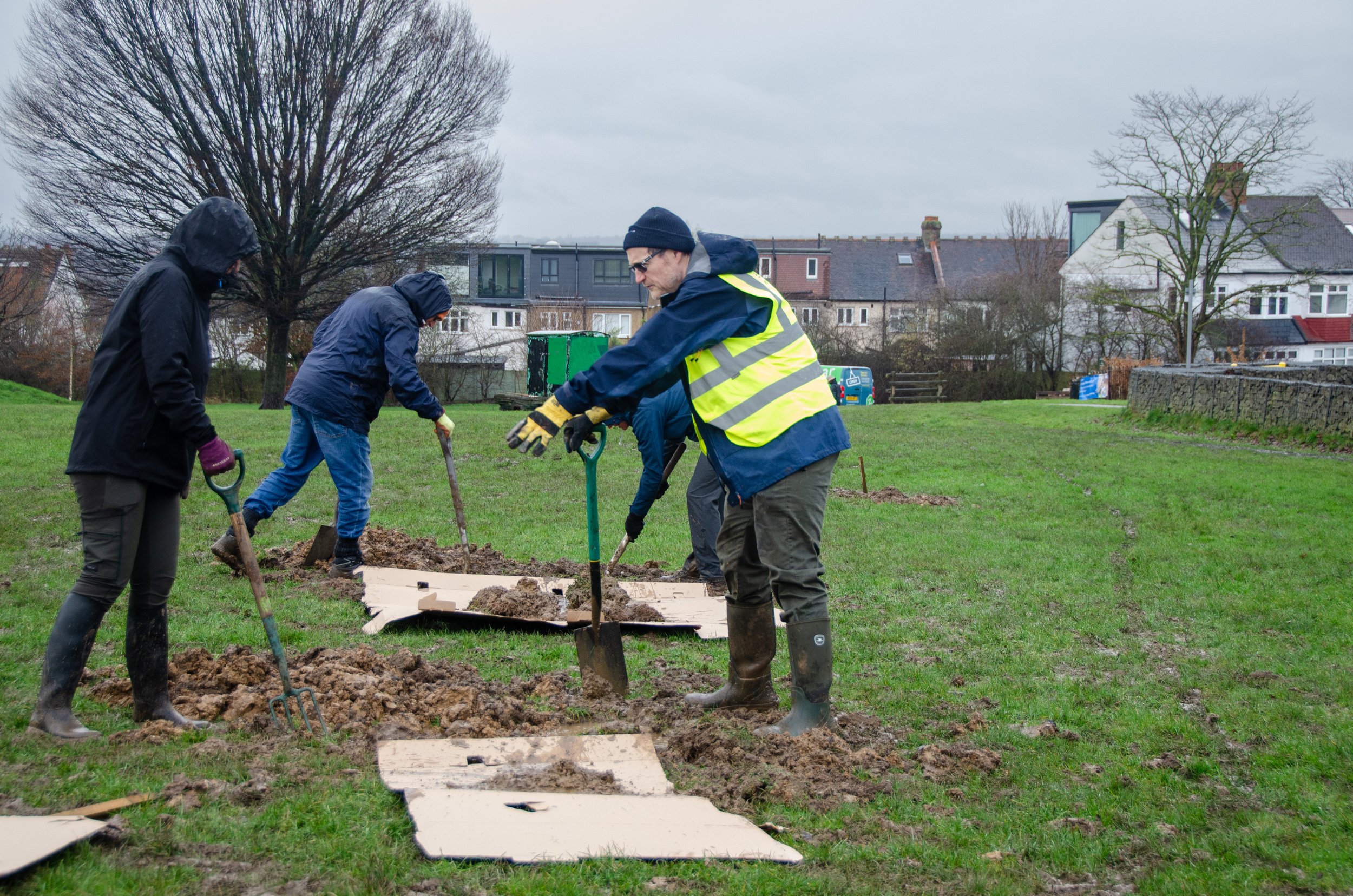
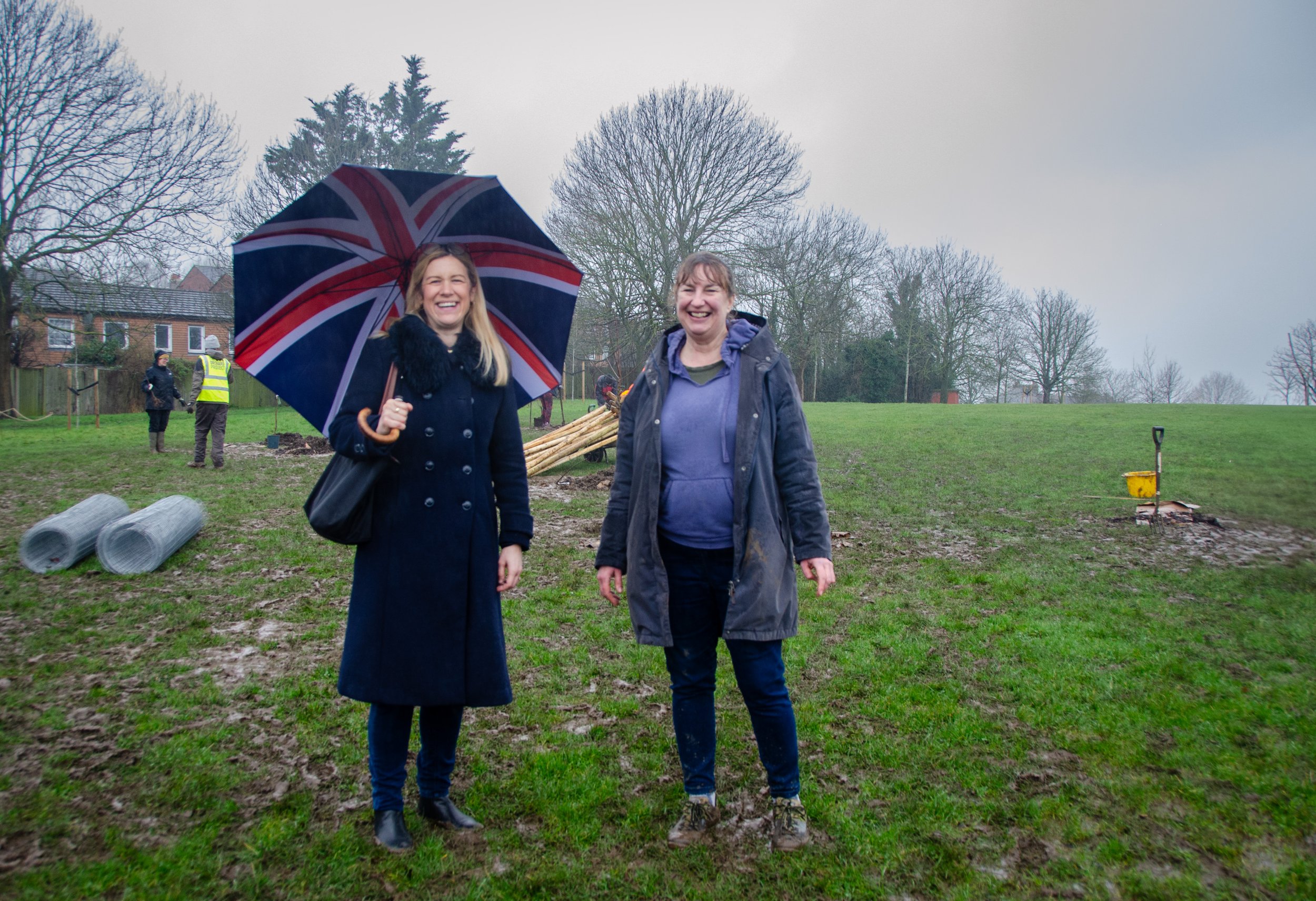
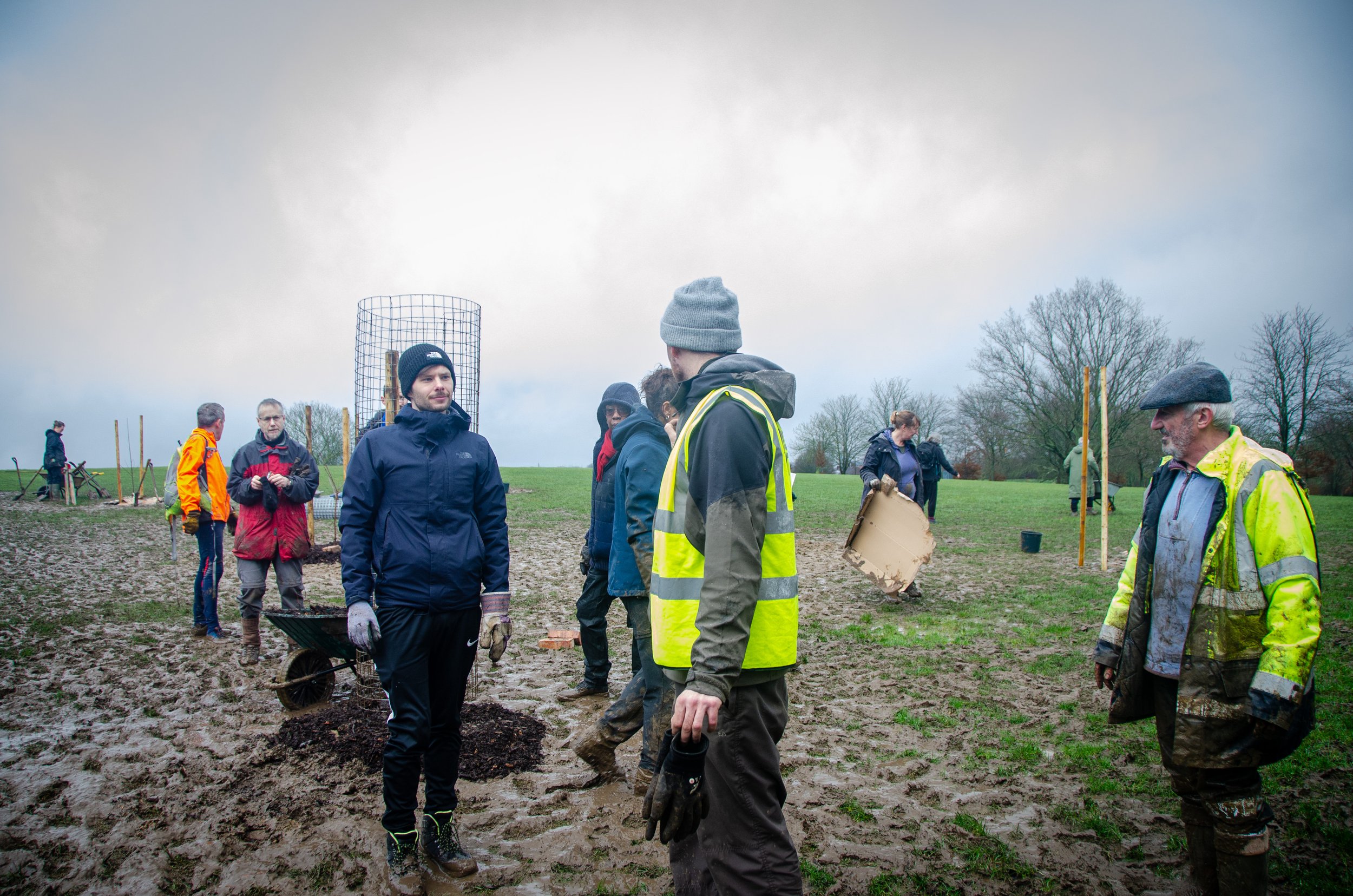
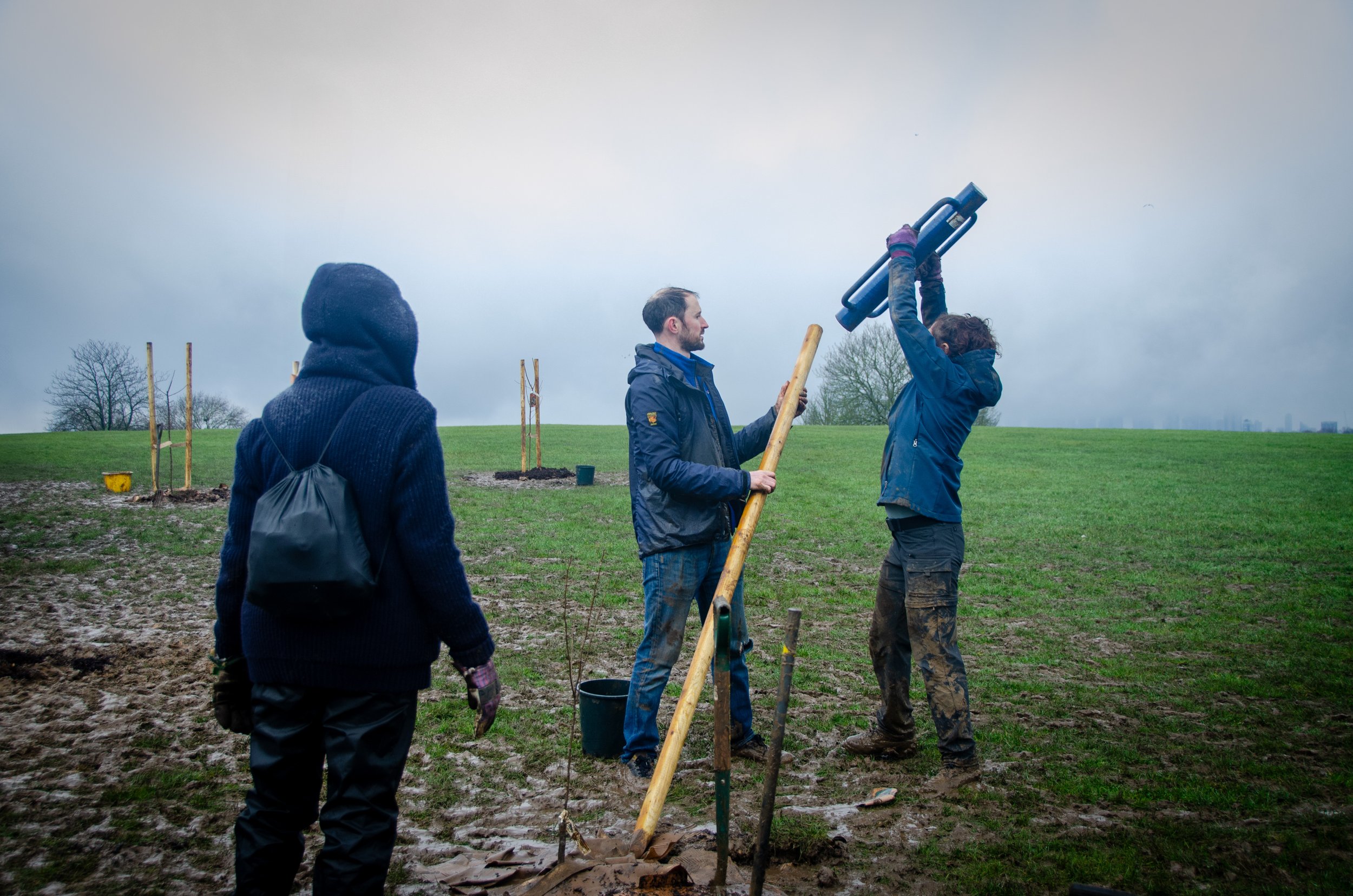
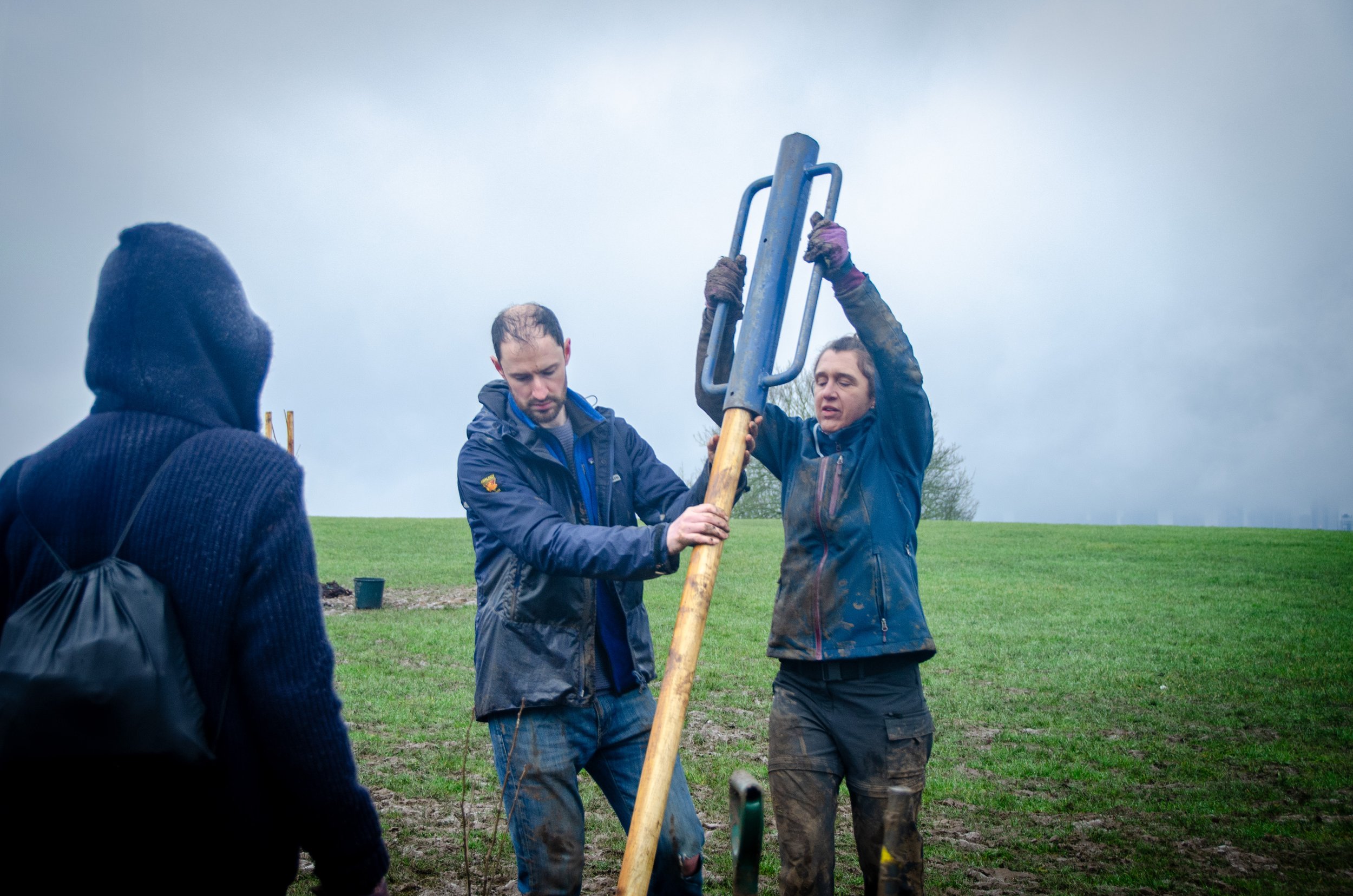
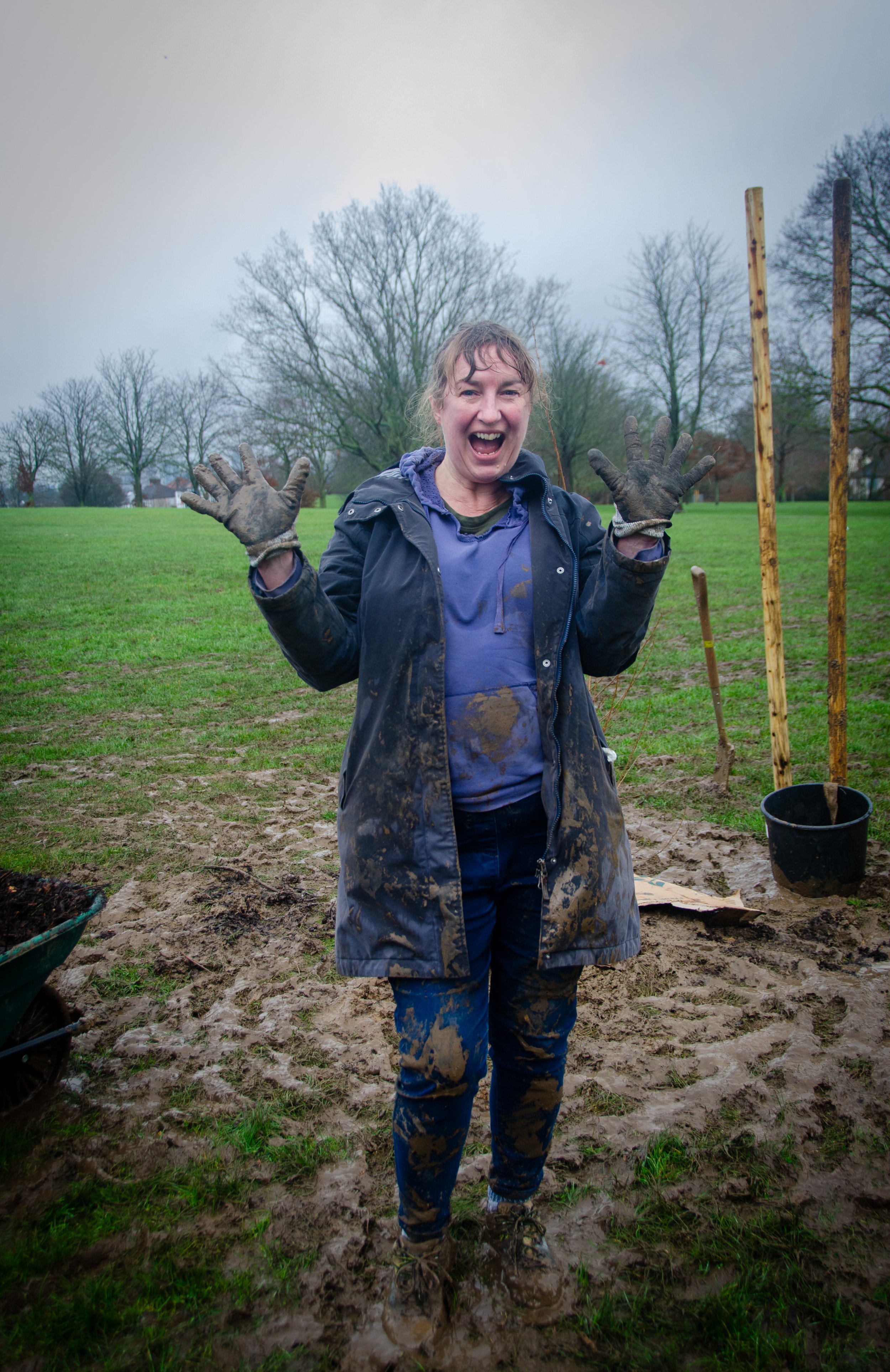
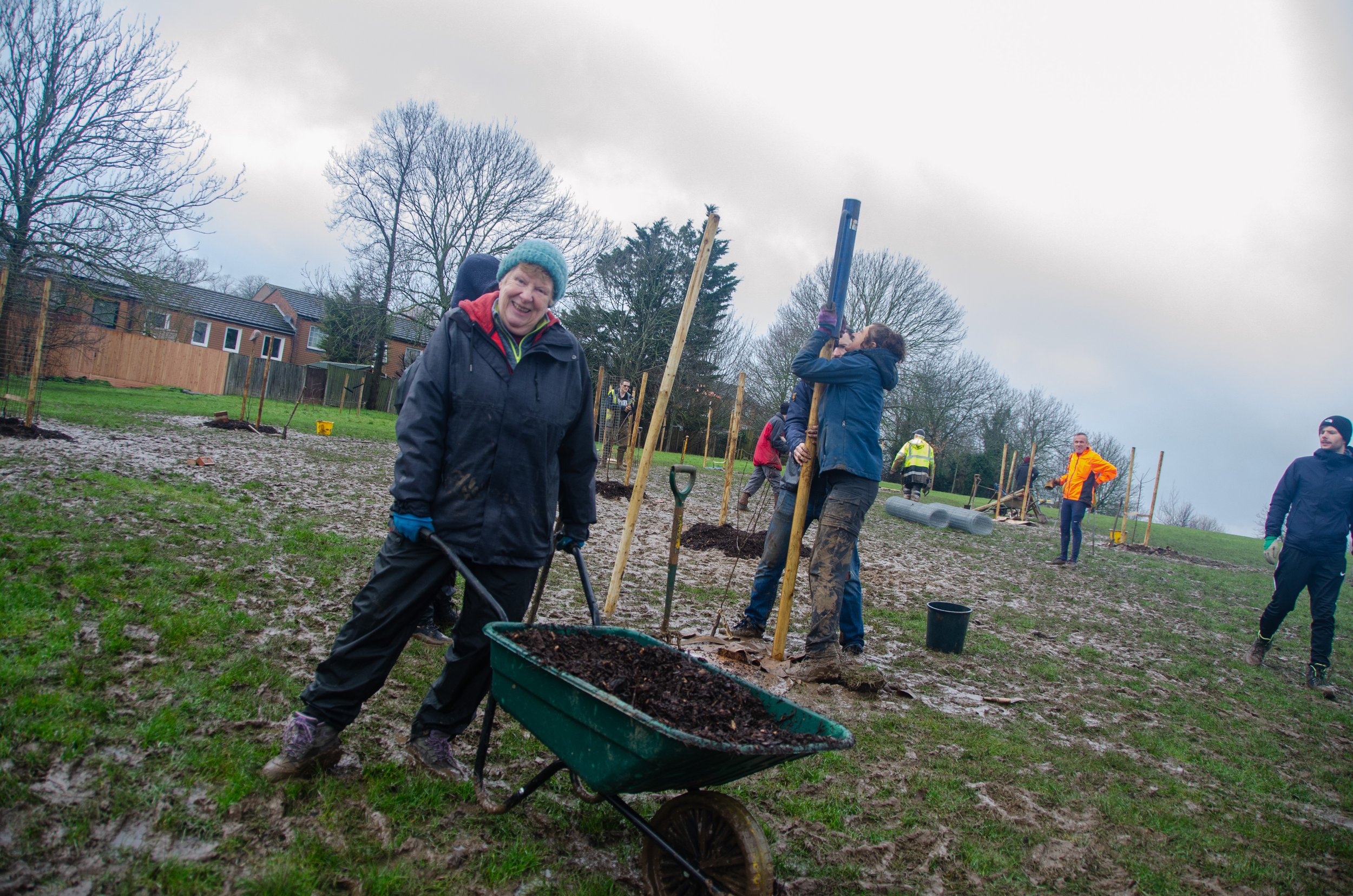

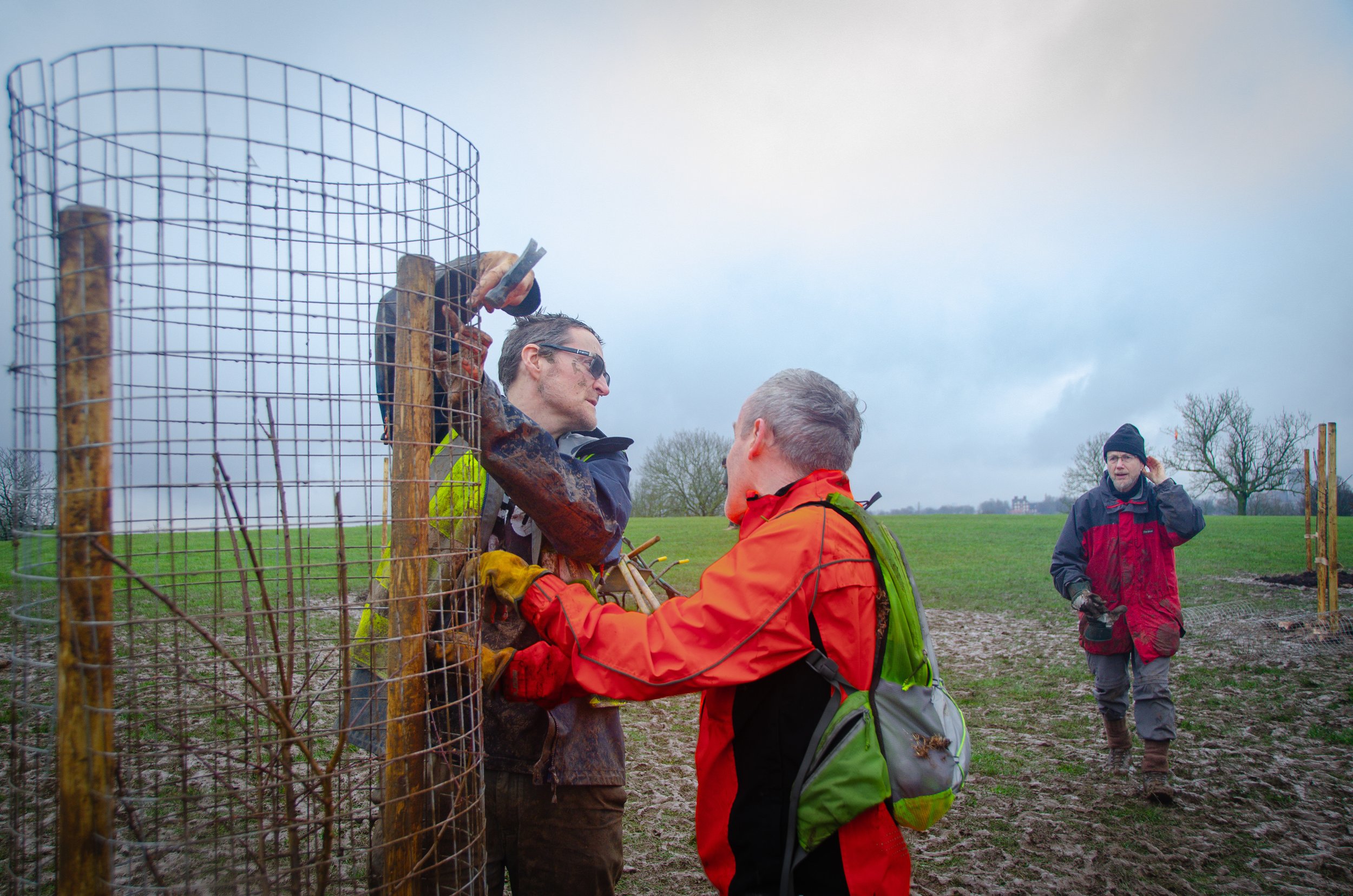
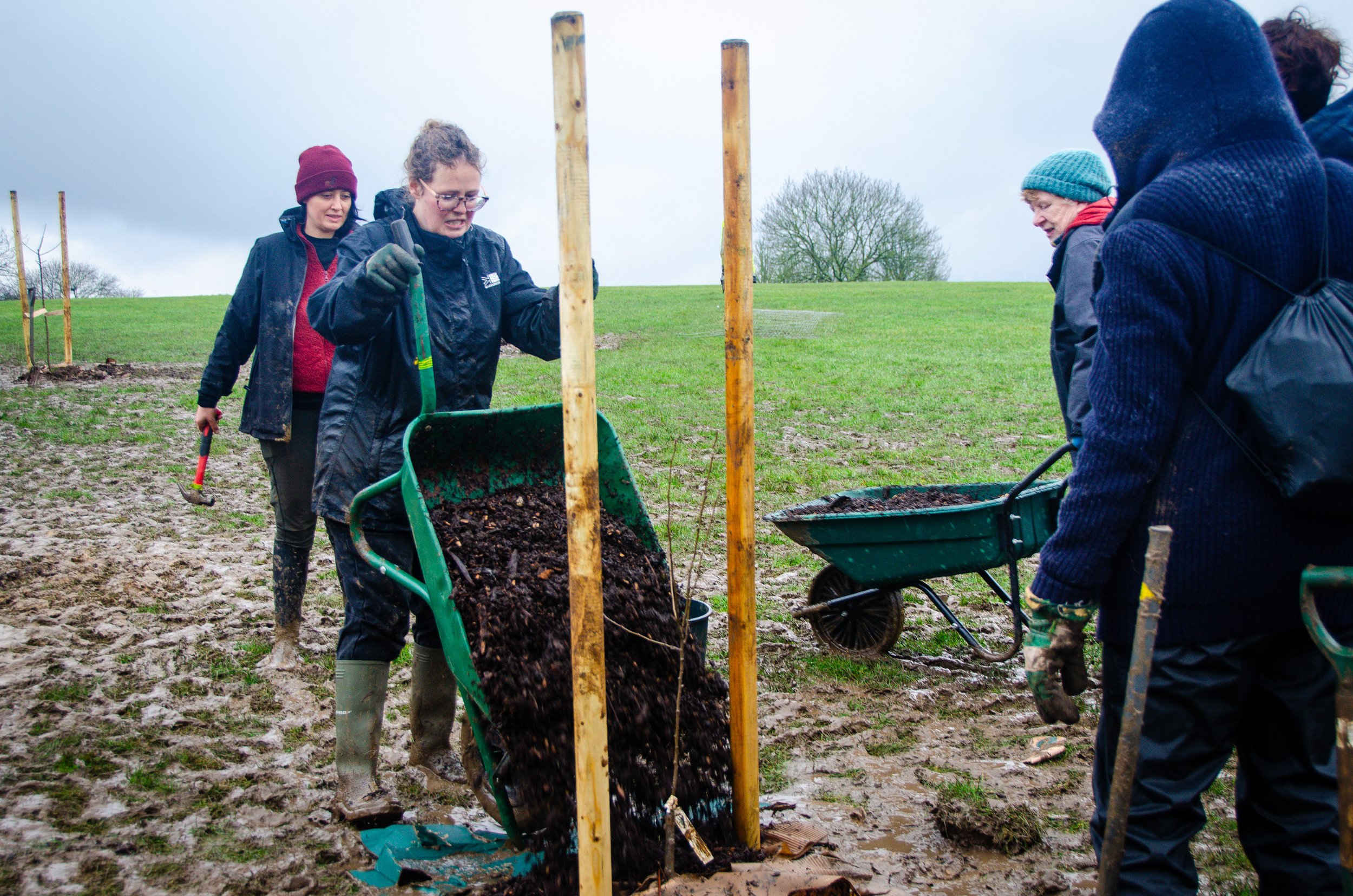

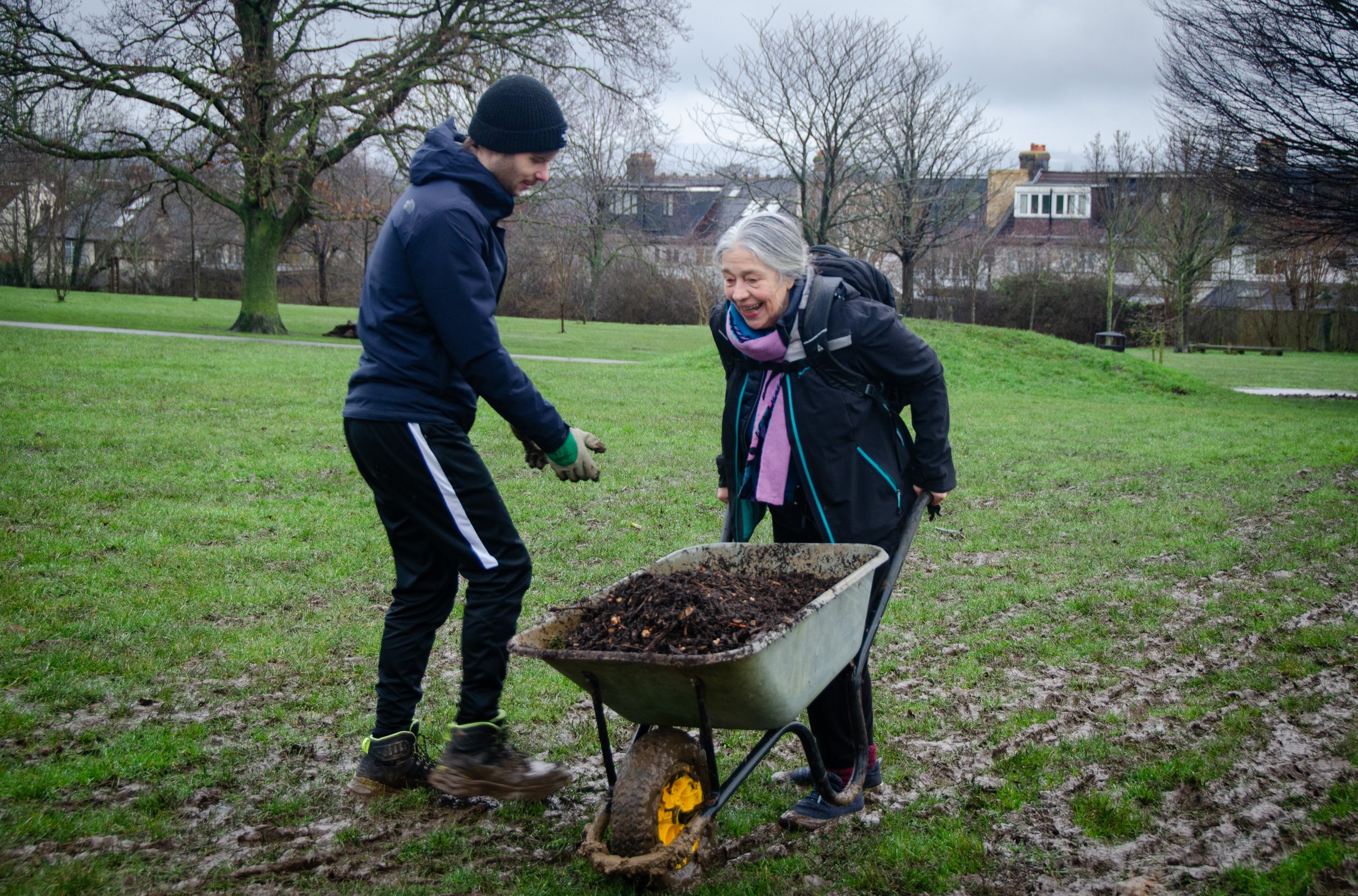
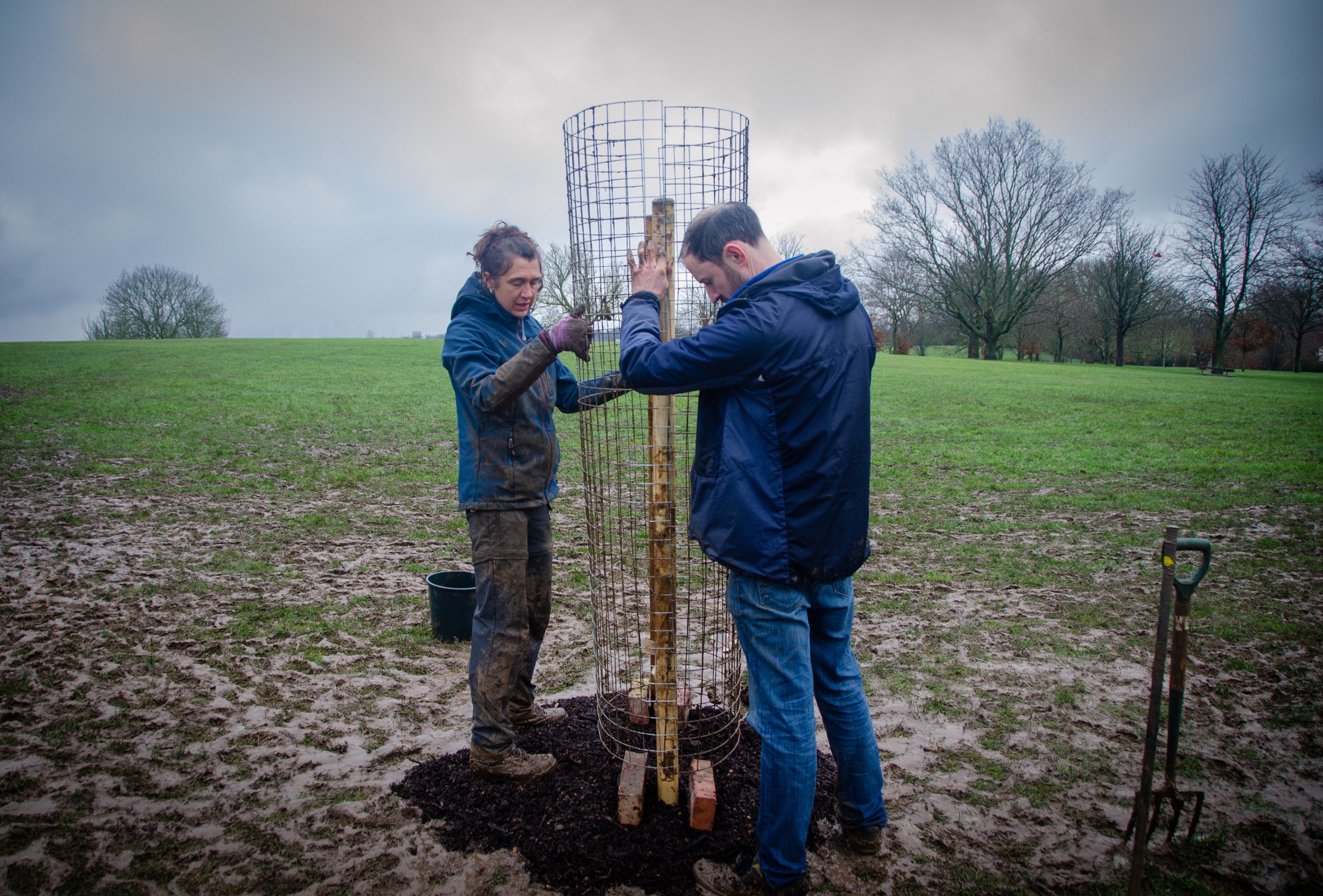

A Tiny Forest
The Friends has collaborated with EarthWatch Europe and London Borough of Lewisham to add a new Tiny Forest to Blythe Hill Fields.
Tiny Forests are intensively planted new forests following the Miyawaki method, with 600 trees planted into an area the size of a tennis court. This planting method creates mini urban forests that establish five times faster than traditional methods, providing a huge boost to local biodiversity, as well as supporting flood management, urban cooling and community wellbeing.
Planting on Blythe Hill was initially postponed due to wet weather and waterlogging on site, but things soon dried up enough for works to be completed and we held a successful planting day on Thursday 18 April 2024.
The Friends will continue to work with EarthWatch and other members of the local community to care for the forest and help it become fully established over the next few years.
To learn more about Tiny Forests and find out how to get involved as a Tree Keeper, please visit the Tiny Forests website.
If you’re curious about the species planted in Blythe Hill you can download the final tree list.























Wildlife-friendly planting
Together with Butterfly Conservation, the Friends has been working to boost Biodiversity in the park by adding new wildlife-friendly habitats, including trees, shrubs and meadows.
We’ve planted 20 fully grown trees and around 60 tree and shrub whips, many of which have been selected specifically for their wildlife benefit.
Chief among these is three different varieties of blight-resistant Elm – Lutece, New Horizon and Ademuz – which will replace trees lost due to disease in the last Century. Elm trees provide habitat for a wide range of species, including the White Letter Hairstreak butterfly, which is currently regarded as ‘at risk’.
Our Biodiversity plan
Our Biodiversity work is summarised in our current Biodiversity Plan. Published in October 2023, this is version 3 of the plan, which maps out key priorities and provides a framework for sustainable, managed improvements. It builds on the long-term park improvements plan first developed by the Friends in collaboration with the charity Groundwork almost 20 years ago.
Previous projects
To learn about our previous work, please visit Impact.
